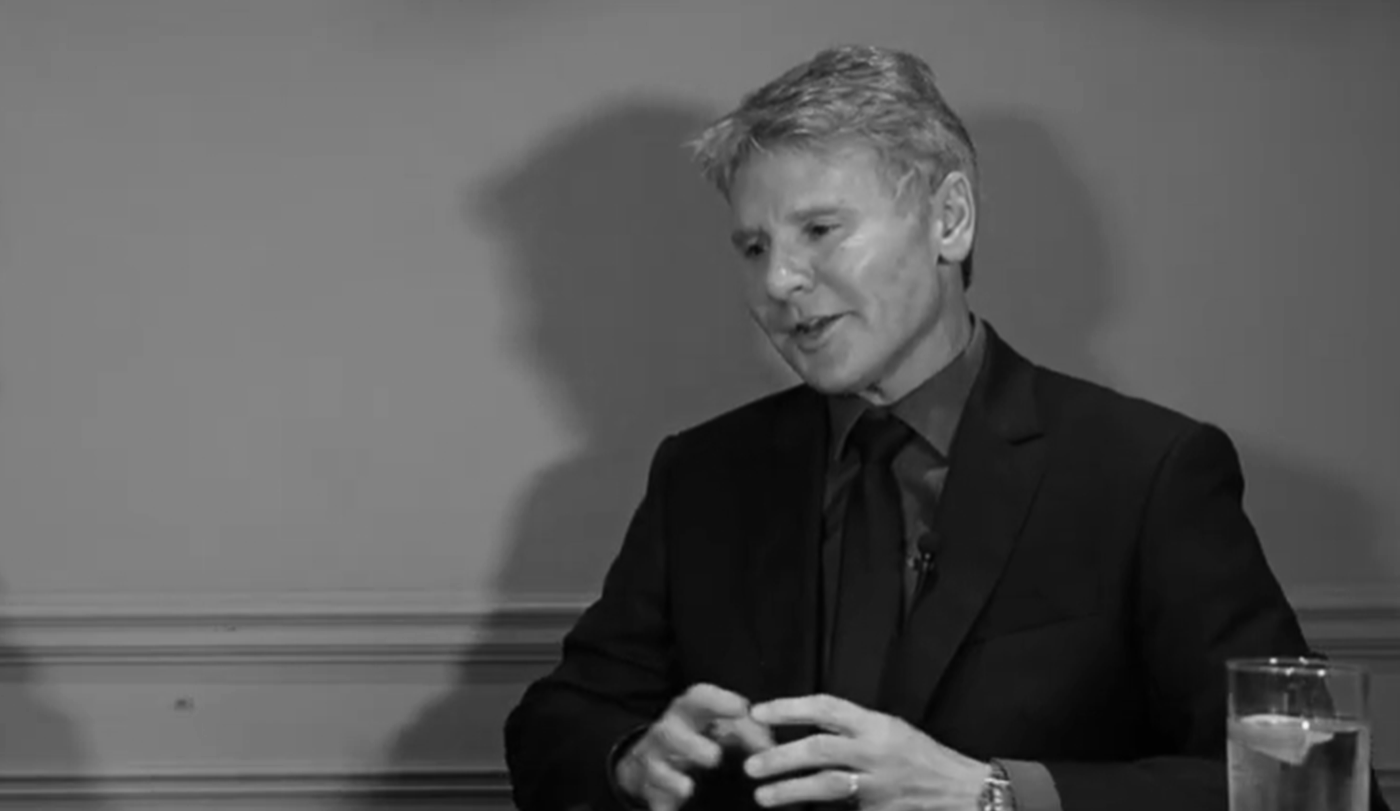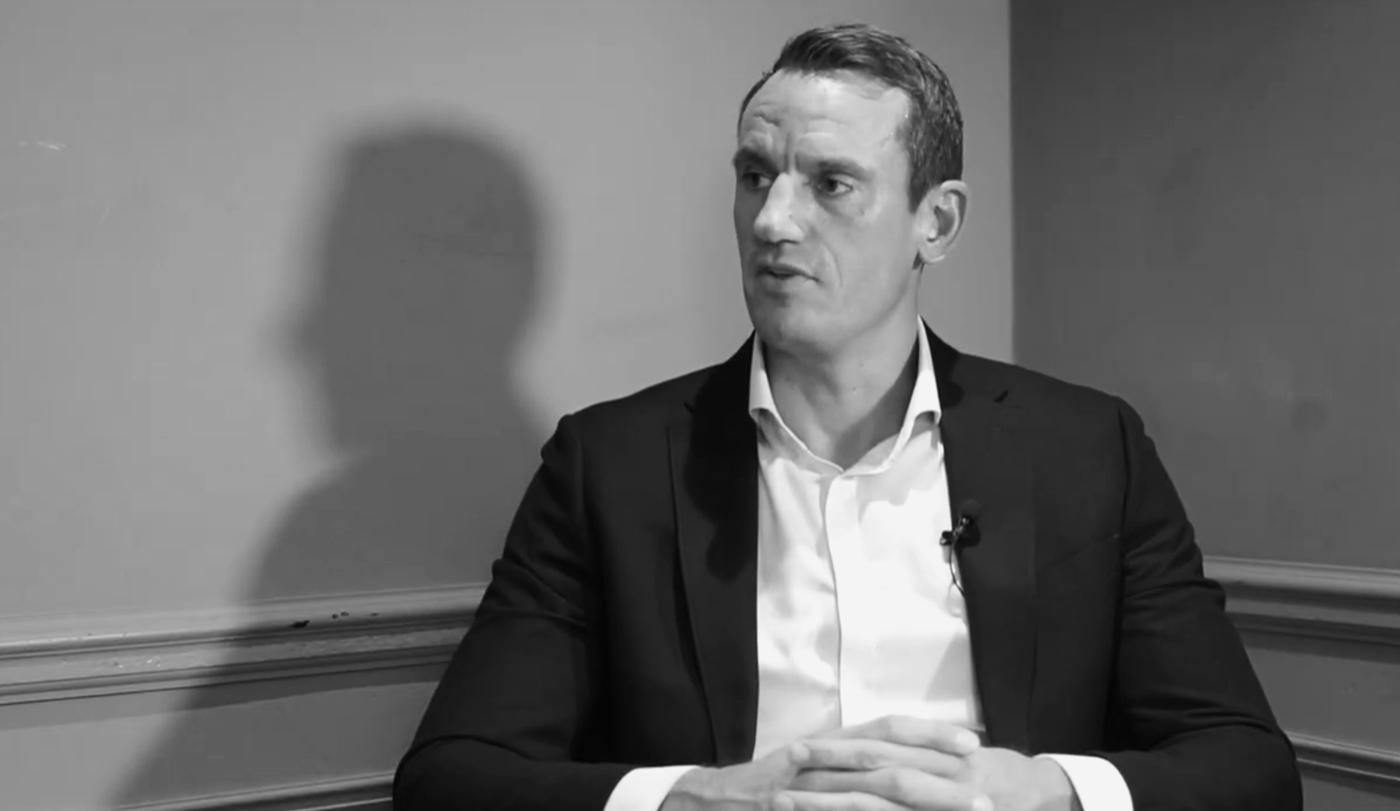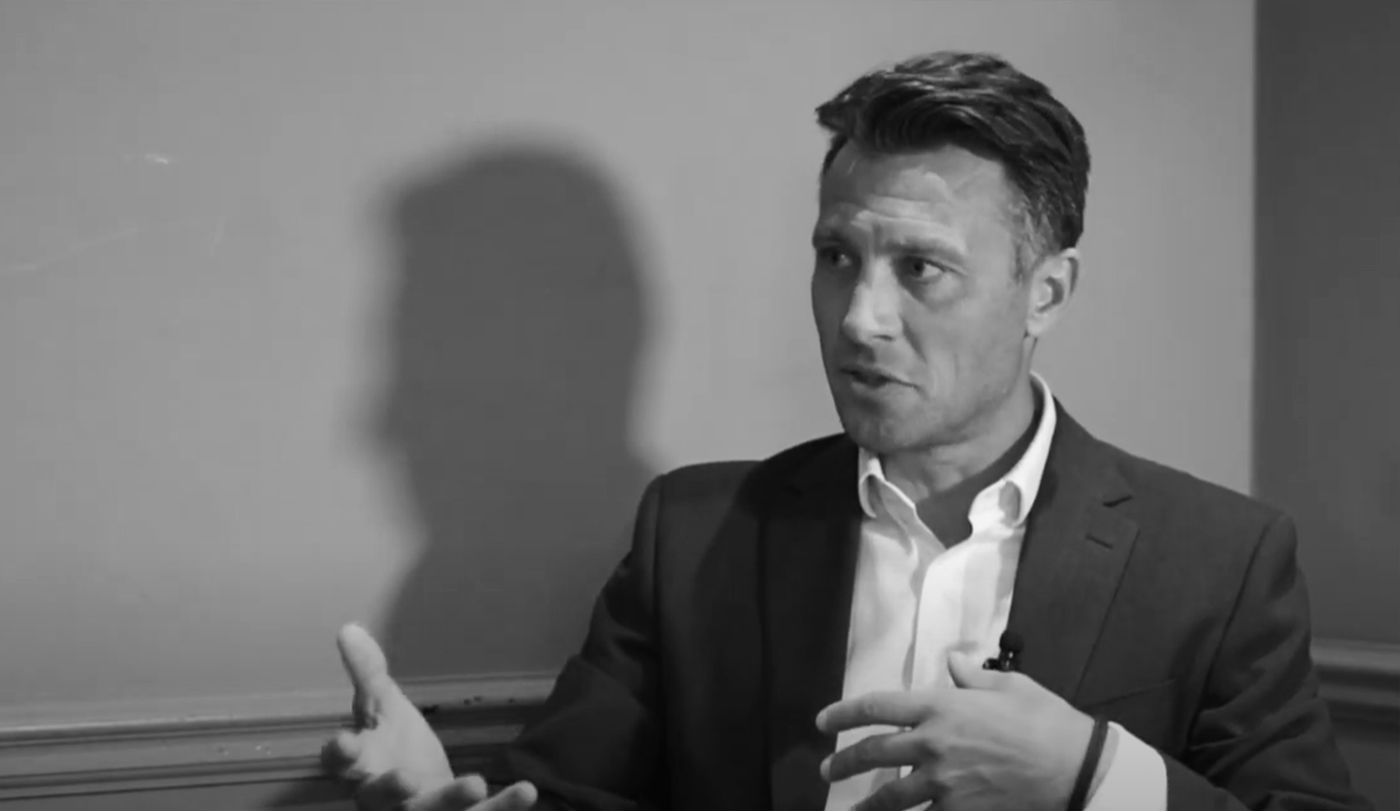On helpful client communication, investment as a team sport and a contemplative moment at St Paul’s
In our regular video series, we interview the wealth sector’s key decision-makers to discover how they think about life, both within the world of investment and beyond it; what brought them into the business and what keeps them here; and what makes them and their companies tick
‘How do we help investors make good decisions?’ is the question that can act as the foundation stone of effective client communications, believes Dan Kemp, chief research and investment officer at Morningstar.
Talking with Wealthwise editorial director Julian Marr in the above video, he says: “Part of the job of any wealth manager, adviser, professional investor, is to try and help their client stay on the journey. It is not so much about finding the ‘right’ client as creating the ‘right’ client by helping them understand their goals, giving them a good plan and showing them how they can get where they want to go.”
For Kemp, behavioural insights are a key here because, as an industry, wealth management has not always communicated with clients in the most helpful way. “One of the things professional investors tend to do most prominently when communicating with clients is tell them what the short-term returns have been,” he says. “And, of course, that leads exactly to what we don’t want to happen as it encourages people to buy high and sell low.
Anybody can, I think, start from that perspective of, When I am communicating with clients, how is my focus helping them make good decisions, rather than showing them how clever I am or how well we have done in the recent past?”
“Another thing people often do is write market commentary that very confidently predicts the short-term future or ascribes market movements to a single cause – all of these things create narratives in the minds of investors that can create surprises further down the line and lead to people’s undoing. As such, thinking about all of our communications through that behavioural science lens is really important.
“So we always start from the perspective of, How do we help investors make good decisions? We are fortunate we have a behavioural science team within Morningstar that can help us do that – nevertheless, anybody can, I think, start from that perspective of, When I am communicating with clients, how is my focus helping them make good decisions, rather than showing them how clever I am or how well we have done in the recent past?”
Quality and value
Elsewhere in the conversation, Kemp discusses the potential opportunities for investors arising from the current “huge disparity in expected returns from different asset classes”, offers an alternative take on what to do if you are at a loose end near St Paul’s at 5pm on a week day and expands on the two qualities he and his team always look for in an investment – quality and value.
“We define quality in the same way Warren Buffett does, in that we like businesses with moats,” he says. “What we mean by that is there should be something about that business that protects its ability to deliver returns on capital far into the future. That could be a brand, it could be the way it acts as part of a network, it could be the way it controls costs – there are lots of different moat sources. But we like businesses with a moat – and, if you identify one, then you can pay up for the share price and still get a decent return.
“If a business doesn’t have a moat – or even if it does – we also love companies that are trading below a reasonable expectation of what they are really worth. Now, if you can have both high quality and a lot of value, that is ideal – and we are seeing a few instances of that at the moment – but normally you have to choose. And so we spend some time thinking more about quality businesses that are not as cheap as we would like them to be, or very low-cost businesses that are not as high-quality as we want them to be. There is always a compromise but, if you can find the sweet spot, that is ideal.”
A full transcript of this episode can be found after this box while you can view the whole video by clicking on the picture above. To jump to a specific question, just click on the relevant timecode:
00.00: Introduction
00.57: What excites you about the current investment outlook? What worries you?
02.39: What do you most look for in an individual investment? What constitute ‘red flags’?
04.44: To what degree should professional investors be thinking beyond so-called ‘traditional’ investments? Towards what?
06.53: What drives your approach to client communications? Should professional investors aim to attract the ‘right’ type of client?
09.30: What was your path into investment – and, if you hadn’t taken it, what do you think you would be doing now?
12.36: What is the biggest investment mistake you are prepared to admit to – and what did you learn from it?
14.28: Outside of work, what is the strangest thing you have ever seen or done?
16.03: What are your best and worst-case scenarios for the future of wealth in the UK?
17.45: Two ‘Choice Words’ recommendations, please – one a book; one a free choice?
Transcript of ‘Choice Words’ Episode 4:
Morningstar’s Dan Kemp – with Julian Marr
JM: Well, hello and welcome to the latest in our series of ‘Choice Words’ videos where we get to chat to key decision-makers in the world of fund selection and fund research. I am Julian Marr, editorial director of Wealthwise Media, and today I am delighted to be talking to Morningstar’s chief research and investment officer, Dan Kemp. Hello, Dan.
DK: Hello Julian – it’s good to see you.
JM: That is kind! Thank you very much. Now, what I learned from the first batch of Choice West videos we filmed is that my intros need to be shorter. So, Dan, straight into the investment chat – what excites you about the current investment outlook and what worries you?
DK: Well, of course, the great thing about investment – what keeps me interested, day after day for 30 years – is there is always something that is really interesting and exciting. And there are always risks on the other side. And, as we look at the markets at the moment, one of the things we are seeing is this huge disparity in expected returns from different asset classes. So people will be thinking about US markets leading the world over the last couple of years and, within that, a small group of large-cap technology-driven companies have been doing very well.
But other parts of US market have really lagged behind. And other markets outside the US have lagged behind. So you have this huge gulf in expectations and that is a wonderful time for thoughtful investors and active managers – even if active may have been out of favour – really to find fantastic opportunities. And this is, I think, probably the most extreme I have seen it since the turn the century. So that is really exciting.
Then, on the risk side, the risk is always the same – that, in an uncertain world, we are missing something. That is what keeps me up at night, as it were – that there is a scenario I am not thinking about. And, particularly, a scenario that acts as a fault-line through markets – something that connects things together – that I am missing. So that is what I am constantly worrying about – but what I am excited about is all the opportunities we see around the world.
Moats wanted
JM: Excellent – very succinct. This is why we have less me and more Dan. And then, drilling down to individual investments what do you, your team, the good ship Morningstar, look for most in an individual investment? What do you see as red flags?
DK: OK, so it is always two things. The first is quality – and we define that quality in the same way Warren Buffett does, which is that we like businesses with moats. What we mean by that is there should be something about that business that protects its ability to deliver returns on capital far into the future. That could be a brand, it could be the way it acts as part of a network, it could be the way it controls costs – there are lots of different moat sources. But we like businesses with a moat – and, if you have a business with a moat, then you can pay up for the share price and still get a decent return.
If a business doesn’t have a moat – or even with businesses that do have moats – we also love value. We love companies that are trading below a reasonable expectation of what they are really worth. Now, if you can have both – if you can have high quality and a lot of value – that is ideal and we are seeing a few instances of that at the moment. But normally you have to choose. And so we spend some time thinking more about quality businesses that are not as cheap as we would like them to be, or very low-cost businesses that are not as high-quality as we want them to be. So there is always a compromise but, if you can find the sweet spot, then that is absolutely ideal. So that is what we look for.
In terms of red flags, for us, it is really investments that do not deliver a cashflow and that is where businesses tend to be driven by sentiment – and not just businesses, but assets as well. You know, people get very excited about cryptocurrency – that doesn’t have a cashflow – or other assets that don’t have a cashflow. So that is one red flag. High fees are another because, if you are leaking your capital out through costs all the time, then that is a really big red flag. So if you can keep those two things in mind – investments that don’t deliver cashflows, that can’t be valued properly, or investments that cost you too much to own, then those are the big red flags.
Beware traps
JM: OK. Now, I am not leading on to this question just because you mentioned cashflow and how expensive things might be. But to what degree do you believe professional investors should be thinking beyond more traditional investments – and towards what?
DK: That is the fun thing. You and I have been around the industry for roughly the same amount of time and what we both know is that things that were considered ‘alternatives’ when we started our careers are now very mainstream – and the things that are now seen as ‘alternatives’ were completely unheard of when we started. So everything that is now a traditional investment was once an alternative, really – apart from, let’s say, government bonds and cash deposits.
So, given that, what we know is there will always be these new alternatives – and they normally emerge into the market because they provide some benefit to investors. The most obvious one at the moment is the convergence of private assets and public markets. We are increasingly seeing private assets in the hands of investors who wouldn’t have been able to access them even a few years ago – and certainly not five or10 years ago. So that is a great innovation because it is allowing investors like you and me access to private companies, which are often very fast-growing, high-quality businesses that are just staying private longer than they used to in the past.
So that is a great thing – but, whenever you get a new innovation, there are always traps as well. So that could be in, say, poor structures that don’t really take into account the liquidity issues; that could be in a lack of understanding among investors; that could be in bad actors in some of these emerging industries. We have seen them before!
JM: Yes, but we are a new business and just starting out so let’s not mention any names!
DK: Yes – but we know after every boom, there are always a few bad actors around and that is why it is so important that investors do their homework. And that is why we see our role as trying to help people navigate these new investments and access these opportunities, while trying to avoid some of the traps for the unwary.
Good decisions
JM: Very good. Thank you for that. Helping clients navigate traps brings me neatly to communication. What drives your approach to client comms? And to throw in an extra question, should professional investors aim to attract the ‘right’ type of client – or, to put it another way, should you be developing the ‘right’ client who understands what they are getting involved with and, therefore, does not bail out of their investments at the wrong time?
DK: Well, I would say it is our responsibility to make sure people become the right type of client. You and I know that everyone has these cognitive biases and the most prevalent is that we are naturally inclined to buy high and sell low – so we tend to make terrible decisions unless we are coached, and certainly in the heat of the moment. So part of the job of any wealth manager, adviser, professional investor, is to try and help their client stay on the journey – and they might be able to coach them from being someone who habitually makes terrible decisions, into someone who is a very competent investor and moving along towards their goals.
So I don’t think it is about finding the right client – it is about creating the right client by helping them understand their goals, giving them a good plan, showing them how they can get there and using the basic behavioural science tools that have all emerged over the last decade or so to help clients along that journey.
So, again, when it comes to communications, the behavioural insights part is really important because so often we communicate as an industry in a way that is not helpful to people – for example, one of the things we tend to do most prominently when communicating with clients is tell them what the short-term returns have been. And, of course, that leads exactly to what we don’t want to happen as it encourages people to buy high and sell low – because, when things have gone up, they want to buy them; and when they come down, they want to sell them.
So thinking about all of our communications through that behavioural science lens is really important. Another thing that people do is write market commentary that very confidently predicts the short-term future or ascribes market movements to a single cause – all of these things create narratives in the minds of investors that can create surprises further down the line and lead to people’s undoing.
So we always start from the perspective of, How do we help investors make good decisions? We are fortunate we have a behavioural science team within Morningstar that can help us do that – nevertheless, anybody can, I think, start from that perspective of, When I am communicating with clients, how is my focus helping them make good decisions, rather than showing them how clever I am or how well we have done in the recent past?
Long and winding road
JM: Well played. Thank you for that. A more personal question now – what was your path into investment and, in an alternative universe, if you had not taken it, what do you think you would be doing now?
DK: Well, I am so glad – I think this podcast is an hour and a half so I can tell the story in full!
JM: That is right – kick back, make a cup of tea and buckle up!
DK: No, the short version is I was planning to go into the investing world. I have always been fascinated by the idea of being able to own parts of companies that we see around us. It is incredible, really. So that was always the plan. I wanted to go and study economics and I was studying economics before, really, the advent of behavioural science. So economics, at that point, was grounded on the idea of the ‘rational person’ – or, in those days, the ‘rational man’ – a concept that just doesn’t actually exist. So I spent all my time on A-level economics, learning theories – and then learning why they didn’t work, which I felt was pointless.
Instead of studying that for three years, then, I decided to follow my great passion of theology and went and did that instead. And then, weirdly, I came out of university in the mid-1990s to discover all the big investment banks and investment management houses didn’t want to hire theology graduates, which was shocking, really! Anyway, from that, I was really fortunate as I ended up getting a job as a pension administrator. I am a dreadful administrator but, in that role, I met financial advisers and I loved the work they did – helping investors. So that moved me into, initially, financial advice and then closer to investment research and investment management and where I have ended up today.
So it was a long and winding road but, if I wasn’t doing this, I think it is most likely I would have ended up in the ministry full time. I have always expected I would end up in the ministry at some point. I never actually felt called to do it and, since I believe the calling is really important, I haven’t done it and I have ended up where I am. But that is where I would be if I wasn’t investing today.
JM: Presumably theology would have helped in early 2000 and then 2008 and 2009, when investors were looking for a little divine intervention!
DK: Well, I do think one of the benefits of studying theology – and philosophy would be the same and some other academic subjects, probably – is an understanding that you are dealing with the infinite and trying to squash the infinite into a finite brain. Now, that doesn’t work and so you are always having to make compromises and deciding where the gaps in your arguments are going to be – and, in a slightly obtuse way, investment is a bit similar.
Investment is functionally infinite – there is always more you can do and there is always more you can think about. And so, to be able to actually act as an investor, you have to decide what you are going to know and what has to be unknown – and try and decide where those gaps in your knowledge are going to be. So I would argue, in some small way, it helped me – but it was also a fantastic three years’ study.
A team sport
JM: Very good. I imagine, for most investors, the religion would come as, Oh god – and the philosophy as, Oh well! Which leads very neatly to my next question – what is the biggest investment mistake you are prepared to admit to? And what, if anything, did you learn from it?
DK: Oh, I have made tons!
JM: S0, again, lucky this is a three-hour recording!
DK: I will keep it brief! You kindly prompted me on this question beforehand so I have given it some thought and I would say most of the investment mistakes I have made have really been ‘sins of omission’ – going back to my theology – rather than ‘sins of commission’. So I have tended to miss out on things that have gone from being quite expensive to very expensive and thus missed out on the gains there, which is frustrating – but that does mean I have also tended to avoid most things that started off very expensive and became very, very cheap or lost money entirely.
Still, I am naturally more cautious, more risk-averse, more pessimistic when thinking about investing and so the biggest mistake I made was believing investing was an individual sport – something you could do on your own, just using your own thoughts, your own learning, your own understanding – because that just embeds your own biases and increased the number of times I made that mistake.
And what I have come to realise in my latter years is that, actually, investing is a team sport and you have to have other people around you with diverse perspectives, who are helping you overcome your own biases. So I would characterise investing as much more like rugby than tennis – it is about having people with lots of different skills, different abilities and different biases, all working together as a team, which will deliver much better outcomes. So, if I had learned that 20 years ago, I think I would have made far fewer mistakes.
Past ‘disaster’, future hope
JM: Well, now no-one watching this has to make that same mistake! A random question now – outside of work, what is the strangest thing you have ever seen or done?
DK: Again, there have been a few – and we are back to things I am prepared to admit to! But I think one of the strangest experiences I have ever had was when I was part of a rock gospel choir when I was in university, and we ended up booking an incredible venue for a concert – the Astoria Theatre in London. I don’t know if you ever went but it closed down, sadly, in 2000 …
JM: Because of your concert?
DK: Yes, mainly because the concert was such a disaster! So we played the Astoria – I think we played there the week after Jamiroquai and about the same time as Inspiral Carpets and all these incredible bands – and we booked this venue, being very optimistic about the crowds we would be able to bring in and ticket and flier and all that sort of thing. And we completely failed in that endeavour – the crowd was really quite small.
It ended up with the organisers, including me, covering the excess cost. So it cost me some money – which, as a student, felt a lot at the time. But of course, I can now look back and go, Oh, wow – I have no musical ability and I played the Astoria! And that is very cool. And I think you do realise, through that, that some of these experiences that maybe feel very expensive or feel very risky actually build into just really wonderful memories as you get further on in life.
JM: Excellent – very philosophical. I have two more questions. One is worky, one is not. On the work or the investment side, what are your best and worst-case scenarios for the future of wealth in the UK?
DK: Best-case scenario is we get closer to the Australian system, where workplace pensions become a much bigger part of everyone’s savings and that creates capital that wealth advisers, financial advisers and investment managers can then use – not only to help people reach their goals, but also to support all of the investment projects we know desperately require new capital in the UK. And so, by recreating here that investing culture we have seen in Australia, I think we could have a transformative impact on people’s lives, but also on the economy and investment opportunities as well.
So I think that is the best case and, while I know we have seen some moves in that direction, there needs to be a lot more. That is the upside while I think the downside is that the industry becomes very small and insular – because the costs of running wealth businesses are quite high, the number of clients people can deal with shrinks – and, in that scenario, the industry is left looking after a small number of wealthy people. Obviously it is doing a very good job of that but it is not having the transformative effect on society it could have, if we were able to broaden out the market to a much greater number of people and help more people reach their goals.
Two books tips – and St Paul’s
JM: Last question, we call this series ‘Choice Words’ because choosing is partly what you do for a living and that was the best pun I could think of at the time. But here we are looking for choices from you in the shape of personal recommendations. One of them would be, ideally, a book. One can be a free choice – whether it is a podcast or a restaurant, or, you know, the best rock gospel experience in the last 30 years that you might just still find on YouTube somewhere! What would you pick?
DK: That is really interesting because I was going to go for two books – the first book being The Most Important Thing. This was the first book on investing that Howard Marks wrote and he is just an incredible investor, very wise and also a brilliant communicator – and this is the first book we encourage new graduates who join our team to read. Everyone has read the book in the team – it is a really wonderful way to conceptualise investing and a good foundation to build from. But as you have given me more choice, I am actually not going to go with my second book …
JM: Oh, you can have a second book.
DK: Then the second book is Edward Hess’s Learn or Die, which is all about creating an ‘ever-learning culture’. And really that drives to the heart of where we want everyone in the team and the business to be – always thinking about, How do we improve? How do we get better? How do we incrementally deliver more. Again, a wonderful, wonderful book – so Learn or Die by Edward Hess would be the second book.
As you give me experiences, though, I have to say one of my favourite things to do – if you are in the City at five o’clock on a weekday – is go to evensong at St Paul’s. Whether you are someone who prays or someone who doesn’t, it is the most wonderful choral experience. If you get there early enough, you can go and sit in the choir, which is really quite an intimate venue, listening to these wonderful choristers and having just a contemplative 45 minutes. As an experience, I don’t think that can be beaten.
JM: Well, that is the point of that question – and it is good to have it communicated with such gusto and enthusiasm. As you know, that is rarely something you get from me so it is nice that you are doubling up on your side. Dan Kemp – great choices, great conversation. Thank you so much for talking to us today.
DK: Thanks for having me. I’m delighted.
JM: And thank you all – he says, optimistically – for watching.
Please do look out for further Choice Words episodes as they are published









